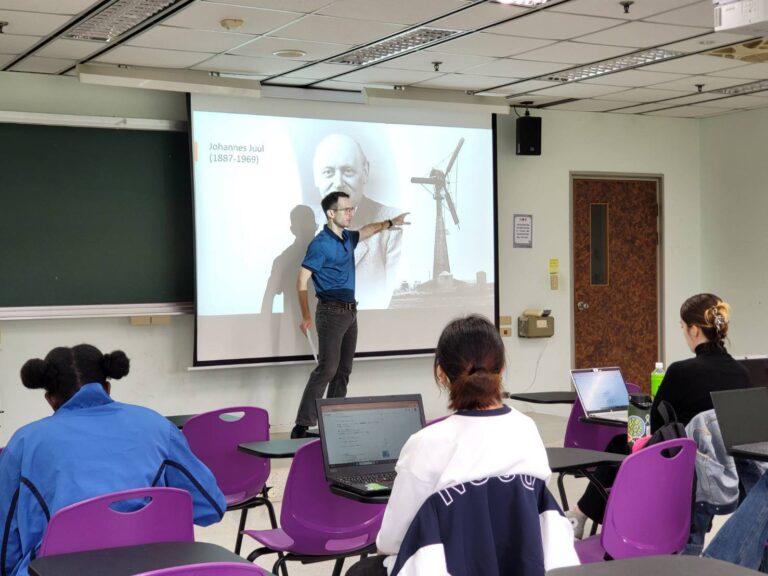
On the morning of November 19, Thomas Schröder, a visiting scholar at the International College of Innovation, delivered an insightful guest lecture to students in the Innovation & Global Development course. His talk, titled “Technological Knowledge and Innovation: The Case of Danish Wind Power,” focused on Denmark’s pioneering contributions to wind energy while drawing comparisons with Taiwan’s growing renewable energy sector.
Schröder traced the evolution of wind power, emphasizing Denmark’s pivotal role in shaping the modern industry. He highlighted the foundational work of Poul La Cour (1846–1908), who pioneered wind turbine design, and Johannes Juul (1887–1969), whose innovative contributions included the first commercially successful wind turbine. Schröder explained that Juul’s success, achieved without a formal academic background, demonstrates how practical knowledge and grassroots experimentation can drive groundbreaking innovation.
Denmark’s wind energy movement gained momentum during the 1970s oil crisis. As energy costs surged, small communities and companies began designing and constructing wind turbines, including an iconic one constructed by a group of teachers and students. Supported by government testing stations, these grassroots initiatives laid the foundation for Denmark’s current status as a global leader in wind energy. Today, Danish turbines are renowned for their durability, embodying a legacy of decentralized, community-driven innovation.
Schröder also introduced theoretical frameworks, including Geoffrey West’s ideas on the limited capacity of scaling innovation, as well as four types of technological knowledge—tacit knowledge, rules of thumb, technological science, and applied science—that drive advancements. He stressed the role of crises in fostering innovation, illustrating how Denmark’s wind energy sector evolved as an alternative during protests against coal and nuclear power.
The discussion also touched on Taiwan’s wind energy journey. While early efforts in the 1960s and 1970s were economically unfeasible, Taiwan has since become a leader in offshore wind capacity. Schröder emphasized the importance of integrating local expertise, infrastructure, and sociotechnical systems for the successful scaling of wind technology.
In closing, Schröder left the audience with a profound takeaway: innovation often relies on building upon old technologies and the most successful advancements often arises when diverse ideas intersect.
Students posed insightful questions, asking about the potential for smaller, more efficient turbines, the sustainability of the wind energy industry, and the potential for developing countries to develop wind energy industry. Schröder acknowledged the ongoing challenges, including the need for large-scale turbines to maximize efficiency, the broader environmental trade-offs inherent in any energy sector, and the sociotechnical system required to export an innovation to other regions.
The lecture’s historical focus aligns with the objectives of this course, led by Prof. Shun-Nan Chiang, who emphasizes the critical analysis of diverse types of innovation in the course’s second part. By integrating historical case studies like Denmark’s wind power innovation, Prof. Chiang aims to cultivate students’ ability to assess how innovations emerge within specific historical contexts and design frameworks, providing insights that may also inform any innovation’s future development.
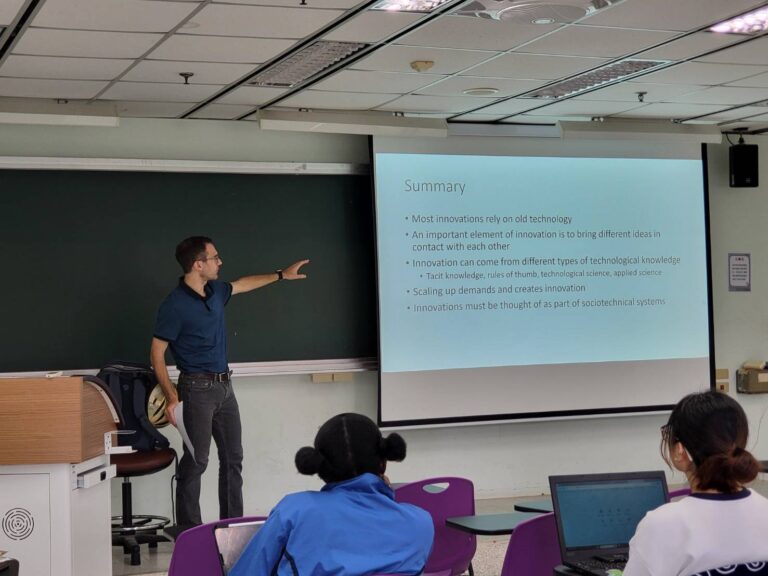 Thomas Schröder, a visiting scholar at the International College of Innovation, explored the history and innovation of wind power during his lecture. (Photo Source: Course TA & Instructor).
Thomas Schröder, a visiting scholar at the International College of Innovation, explored the history and innovation of wind power during his lecture. (Photo Source: Course TA & Instructor).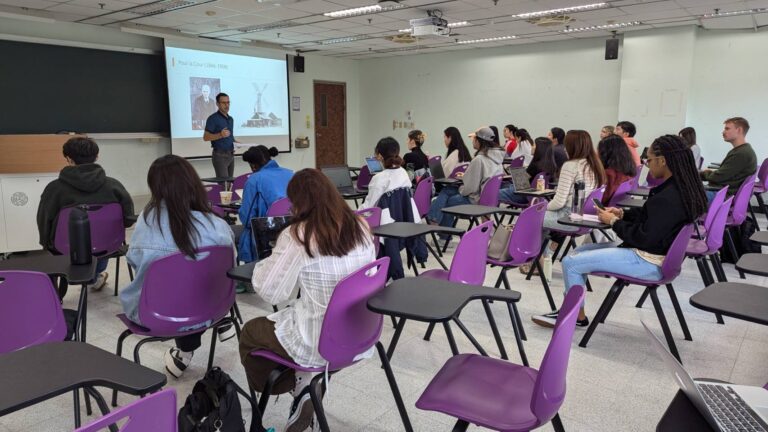 Schröder engaged in interactive discussions with students during the lecture. (Photo Source: Course TA & Instructor).
Schröder engaged in interactive discussions with students during the lecture. (Photo Source: Course TA & Instructor).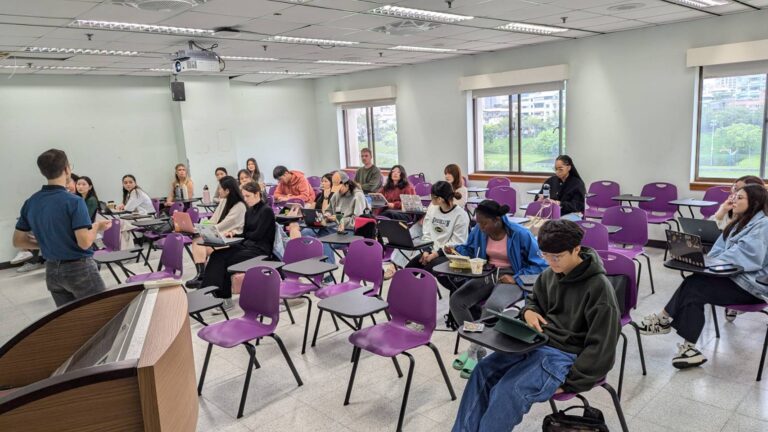 Schröder engaged in interactive discussions with students during the lecture. (Photo Source: Course TA & Instructor).
Schröder engaged in interactive discussions with students during the lecture. (Photo Source: Course TA & Instructor).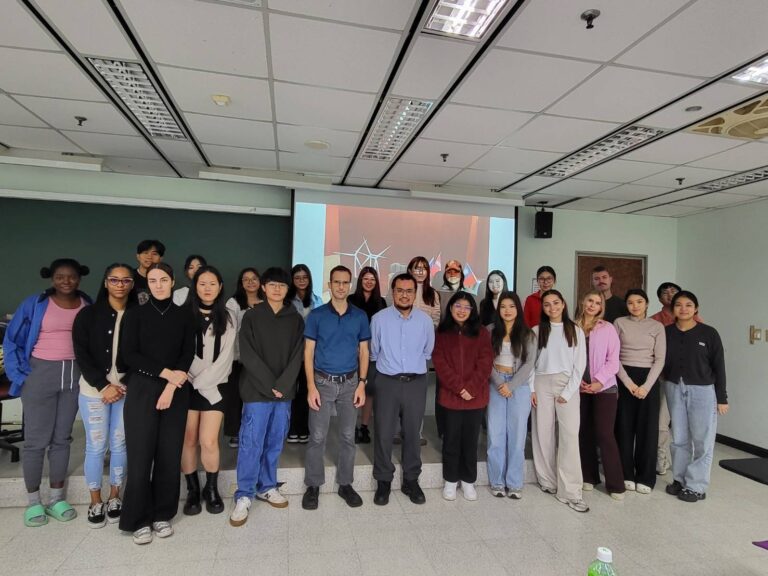 Thomas Schröder, a visiting scholar at the International College of Innovation, posed for a group photo with participating students and the course instructor, ICI Assistant Professor Shun-Nan Chiang. (Photo Source: Course TA & Instructor)
Thomas Schröder, a visiting scholar at the International College of Innovation, posed for a group photo with participating students and the course instructor, ICI Assistant Professor Shun-Nan Chiang. (Photo Source: Course TA & Instructor)





